The Best Glass Break Sensors of 2024: A Definitive Guide

Glass break detectors are a lesser known, often crucial home security component that protect windows and help prevent break-ins and burglaries. If you have a lot of windows, you could likely benefit from installing at least one somewhere in your home. Below you’ll learn what they are, how they work, if you need one, and how to select the right component for your situation.

Our Picks - Best Glass Break Sensors 2024
Qolsys IQ Glass Break Sensor

DESCRIPTION
The Qolsys IQ glass break sensor is popular with our company and others who use the 2GIG line of security panels. Like other similar components, it has a working radius of 25 feet, and 360-degree omni-directional coverage, which means you can mount it anywhere in the same room as the windows you want to protect—including walls and ceilings.
Why We Picked It:
- Best for 2GIG panels
- 25-foot range
- 360-degree omni-directional coverage
- Strong, reliable RF (Radio Frequency) signal
- Four- to six-year battery life on CR123A battery
- Low Battery indicator included
Resolution Products RE109 and RE209 Glass Break Sensors
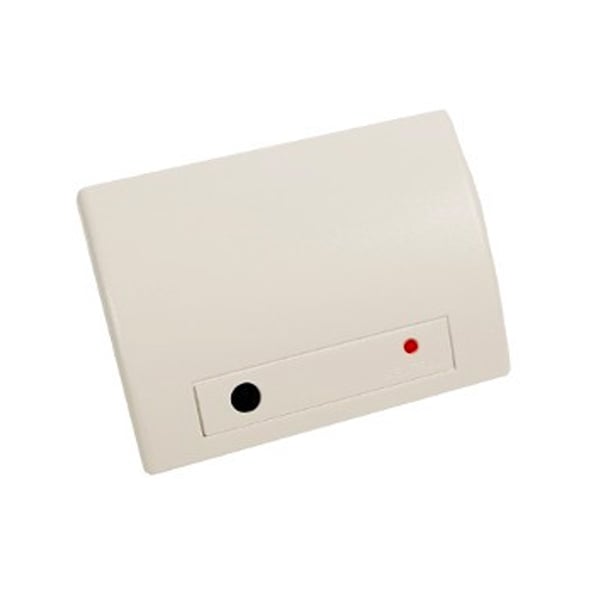
DESCRIPTION
Another of our staples here at General Security, the Resolution Products RE109 and RE209 sensors are compatible with both Honeywell or 2GIG panels. These products and the Qolysis IQ are very similar, with the exception of minor price differences and Honeywell compatibility—the latter is only compatible with 2GIG systems. Both will work for most DIY projects, but if you have any questions, contact a home security professional.
Why We Picked It:
- Best for Qolsysi and Honeywell panels
- 25-foot range
- 360-degree omni-directional coverage
- Strong, reliable RF (Radio Frequency) signal
- Four- to six-year battery life on CR123A battery
- Low Battery indicator included
Honeywell Ademco Wireless Shock Sensor
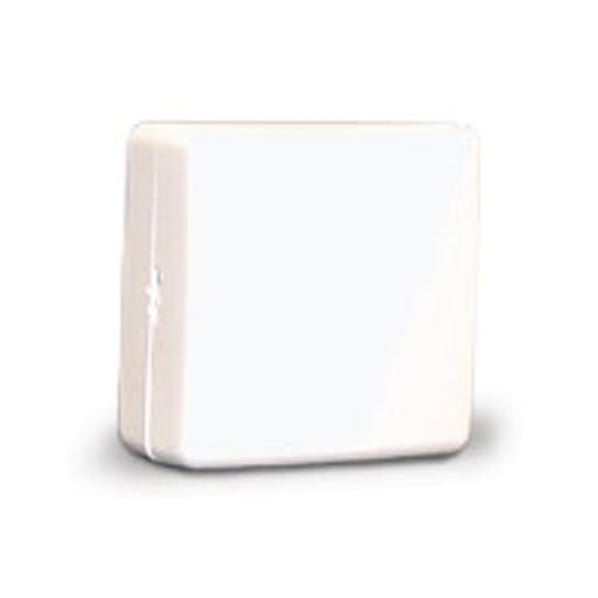
DESCRIPTION
This is the only wireless shock-style glass break sensor we use. It works with all Honeywell and 2GIG panels, and is very easy to install. If your system is compatible and you need this style of sensor specifically, this is likely your best choice.
Why We Picked It:
- Works with wireless systems
- Honeywell and 2GIG compatible
- Uses secure radio frequency communication
What is a Glass Break Sensor?
Glass break sensors—or detectors—are small devices placed on or near windows to notify a homeowner if someone tries to smash a window to break in. They’re usually included in only the most expensive home security packages, but are very important if you have a particularly vulnerable window, or several in one room.
How Do Glass Break Sensors Work?

Glass break detectors work by sensing the noise or vibrations of a window shattering, then sounding a loud alarm and sending an alert signal to your security system. There are several different types that vary in how they sense break-ins or notify homeowners, but the basic pattern of detection and alarm remain the same.
“Glass break detectors work by sensing the noise or vibrations of a window shattering..."
Do I Need a Glass Break Sensor?
Not every home needs a glass break sensor, but they’re crucial for some applications. For example, if you have a bedroom or living space on the ground floor that contains a lot of valuable items, or a sunroom with windows throughout the space, you could benefit from the extra protection such a component provides.
If the room you want to protect only has one window, an on-pane, shock-style sensor is best, while a space with many windows is best served by an acoustic unit. If you’re not sure which is right for you, contact a home security professional.
Benefits of Glass Break Sensors
In addition to enhancing a home’s overall safety, adding a glass break sensor to your security arsenal provides several benefits that help round out your entire system, and work for special cases when other components fall short.
... glass break detectors are a great way to enhance security
Burglary Deterrent
Before even working as an alarm, shock-style sensors stuck on a window pane often act as a deterrent for any burglars prowling around seeking an easy entrance. Stickers work for this purpose as well, but don’t hold the weight of an actual, visible component.
Protection for Pets
Glass break detectors are ideal for homes with pets because they work when motion detectors do not. The latter are a staple of any home security system, and often come with even the most entry-level packages. Unfortunately, they’re often incompatible with pets of 40 pounds or more that will cause a false alarm.
Fortunately, glass break detectors are a great way to enhance security in pet-friendly rooms, as animals won’t set them off, but the homeowner will still get notified of any intrusions. Glass break sensors can even be used as a trigger to turn on a home security camera, just like a motion detector, so you can see what’s happening during a break-in.
Space and Cost Efficient
One sound-based glass-break detector can often cover an entire room with a range of 20 to 25 feet. This helps supplement other sensors in the room without adding excessive clutter or cost to your overall system.
Types of Glass Break Sensors
There are two standard types of glass break sensors: shock or vibration, and sound-based. Each has variations on the standard functionality.
Vibration/Shock vs. Sound-Based Sensors
When a window is broken, the glass pane vibrates as it shatters, and a high-pitched, immediately recognizable sound is instantly emitted.
A shock-based sensor is attached to the glass pane with an adhesive so it can pick up any major movement in the glass. Most are programmed to sense only the specific vibrational frequency of glass breaking, and some offer adjustable sensitivity, so you can program it to ignore slight movements, like the reverberations of a slammed door.
A sound-based sensor is programmed to detect the specific, high-frequency sound of glass breaking. These also often feature adjustable sensitivity, and one sensor works for a radius of 20 feet or more, so it can cover an entire room.
Two-Stage vs. Single-Stage Sensors
Sound-based sensors come in two varieties: single- and two-stage. Two-stage sensors “listen” for two sounds in a row—a dull sound of glass being hit or cracked, and then a second noise from glass shattering or breaking. Single-stage options only listen for the shattering, crashing, sound without an initial thud.
The addition of a second stage helps cut down on false alarms, and won’t go off if a glass breaks in the kitchen, for example. However, there is a very slightly higher chance of missing a legitimate break-in if the first thud isn’t registered, so it’s usually possible to adjust the sensor to act like its single-stage counterpart.
The end choice comes down to compatibility, price, and personal preference. If you’re not sure which is best for your situation, contact a security professional.
Wireless vs. Wired
Most of the popular security components on the market today are wireless, and glass break sensors are no different. Wired options are available, and offer benefits such as nonexistent battery maintenance, but usually the pros are outweighed by a complex installation process and aesthetic downsides.
Z-Wave vs. Wi-Fi vs. Radio Frequency Connection
Z-Wave, Wi-Fi, and Radio Frequency (RF) are three wireless communication methods by which a smart home security hub can connect with other components, including glass break detectors. In general, Z-Wave and RF are more secure than Wi-Fi, but your first priority should be to use whichever option is compatible with your home security hub.
How to Find a Glass Break Sensor that works for your Security System
If you want to find a sensor that will work with your system, the first consideration is whether your hub is Wi-Fi or Z-Wave connected. Also check if your system requires a proprietary connection, like SimpliSafe’s line of components. The safest option is to use a glass-break sensor made by the same manufacturer of your smart home hub. Most security component companies have one in their lineup guaranteed to work with their main hub.
You can often connect Wi-Fi sensors and smart hubs from different manufacturers, but you’ll have to check the individual specifications for compatibility, or browse forums online to read about users’ experiences. The same guideline applies to Z-Wave components.
How to Install a Glass Break Sensor
Installation of glass break detectors ranges from simple to quite involved, depending on the model. Most shock-sensing models come with an adhesive so you can simply stick it to the window, though wired models require you to drill holes and run wires if you want to hide them.
Not every home needs a glass break sensor, but they’re crucial for some applications.
Sound-detecting options also vary in installation procedures, with some that stick to walls with adhesive, are mounted with screws, or even set on a piece of furniture. There are even flush-mounted options, such as the Honeywell FG1625RFM housed inside your wall to reduce clutter.
Features to look for in a Glass Break Sensor
When shopping for a glass break sensor, there are a few things to keep in mind, including: compatibility with your current system, sensor range, sensitivity settings, and battery and arming indicators.
Compatibility
If you plan to connect the glass break sensor to your existing home security system (and we recommend that you do), make sure the two components are compatible.
Range
Check that the range for any sound-based sensor is large enough for the room where it will be used. On the low end, sensors usually work for 20 to 25 feet, which is enough for even large rooms, but if you have an expansive open area, there are sensors with a range as wide as 30 to 35 feet.
Sensitivity Settings
Modern sensors are designed to reduce false alarms, but even the best aren’t tested in every scenario. An accidental tap on a sliding door or a drinking glass breaking could create just the right vibration or sound to set off a detector, so it’s best to purchase a sensor with adjustable sensitivity settings to reduce false alarms.
Indicators
Though not necessary, it can be helpful to look for a sensor with a light or other indicator of battery life and arming status. The other option is to purchase a connected device that can be monitored via your home security app, with indicators on your phone.
Volume
If your sensor has a dedicated alarm, make sure it’s at least an 85-decibel (dB) unit. For reference, in many states, such as Maryland, smoke detectors are required to sound at 85 dB so they can “wake a sleeping person behind a closed door.”
Glass Break vs. Window Contact Sensors
Besides glass break sensors, another popular component used to protect windows is simply called a “window sensor,” or “contact.” These also help homeowners detect intruders, though the method and purpose are different.
Window contact sensors detect if windows have been opened, not broken. A burglar can smash a window, reach through, and disarm a window sensor so it doesn’t set off an alarm. On the other hand, a glass break sensor protects against smashed window panes, but not against a burglar coming through an unlocked window.
One is not better than the other, and in fact, the two sensors balance the other’s weaknesses quite well. The best solution for maximum security is to use both on especially vulnerable windows so any forced window entry causes an alarm.
Compare Glass Break Sensors
Professional-Grade Glass Break Sensorsr
Qolsys IQ Glass Break Sensor

DESCRIPTION
The Qolsys IQ glass break sensor is popular with our company and others who use the 2GIG line of security panels. Like other similar components, it has a working radius of 25 feet, and 360-degree omni-directional coverage, which means you can mount it anywhere in the same room as the windows you want to protect—including walls and ceilings.
Features:
- Best for 2GIG panels
- 25-foot range
- 360-degree omni-directional coverage
- Strong, reliable RF (Radio Frequency) signal
- Four- to six-year battery life on CR123A battery
- Low Battery indicator included
Resolution Products RE109 and RE209 Glass Break Sensor

DESCRIPTION
Another of our staples here at General Security, the Resolution Products RE109 and RE209 sensors are compatible with both Honeywell or 2GIG panels. These products and the Qolysis IQ are very similar, with the exception of minor price differences and Honeywell compatibility—the latter is only compatible with 2GIG systems. Both will work for most DIY projects, but if you have any questions, contact a home security professional.
Features:
- Best for Qolsysi and Honeywell panels
- 25-foot range
- 360-degree omni-directional coverage
- Strong, reliable RF (Radio Frequency) signal
- Four- to six-year battery life on CR123A battery
- Low Battery indicator included
Honeywell Intellisense FG-1625 Glass Break Sensor
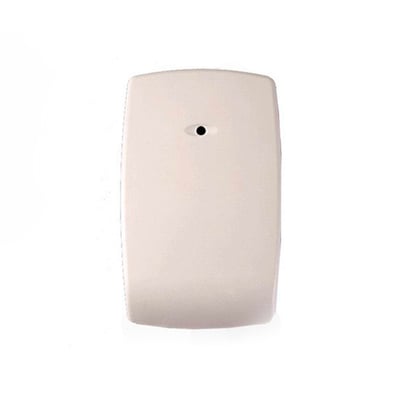
DESCRIPTION
The Honeywell Intellisense FG-1625 is another popular glass break sensor with a sleek appearance and adjustable sensitivity levels. Despite what’s often mentioned online, this unit is NOT wireless. It’s still a solid component if you have a wired system in place, but it’s losing popularity as other wireless models become ubiquitous.
Features:
- Works with wired systems
- Sleek appearance
- Adjustable sensitivity
Honeywell 5853 Glass Break Sensor
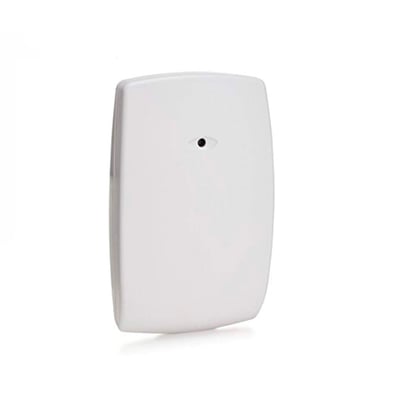
DESCRIPTION
The Honeywell 5853 is one of the most-often mentioned glass break sensors online, as it works well with popular Honeywell panels, and is even used by some professional companies. We specify Resolution Products sensors over this one, as they’re easy to set up with our panels, but the 5853 is serviceable, as well. The differences between the two are largely aesthetic and a matter of installer preference.
Features:
- Sleek, modern design
- Works for DIY (Do it Yourself) applications and used by some professional installers
- Works with Honeywell and select RF panels
2GIG GB1 Wireless Glass Break Detector
-0fcf.jpg)
DESCRIPTION
This 2GIG unit unsurprisingly works with the entire 2GIG line of panels. It’s designed to be mounted on the ceiling, unlike most wall-mounted sensors, but only has a 15-foot range—still more than enough for a normal living space. If you’re specifically looking for a ceiling-mounted option, this is one of the best.
Features:
- Designed to be wall-mounted
- Short, 15-foot range
- Works with all 2GIG panels
- Uses secure radio frequency communication
Shock Based Sensors
Honeywell Ademco Wireless Shock Sensor

DESCRIPTION
This is the only wireless shock-style glass break sensor we use. It works with all Honeywell and 2GIG panels, and is very easy to install. If your system is compatible and you need this style of sensor specifically, this is likely your best choice.
Features:
- Works with wireless systems
- Honeywell and 2GIG compatible
- Uses secure radio frequency communication
GE Security Interlogix 5150 Wired Shock Sensor
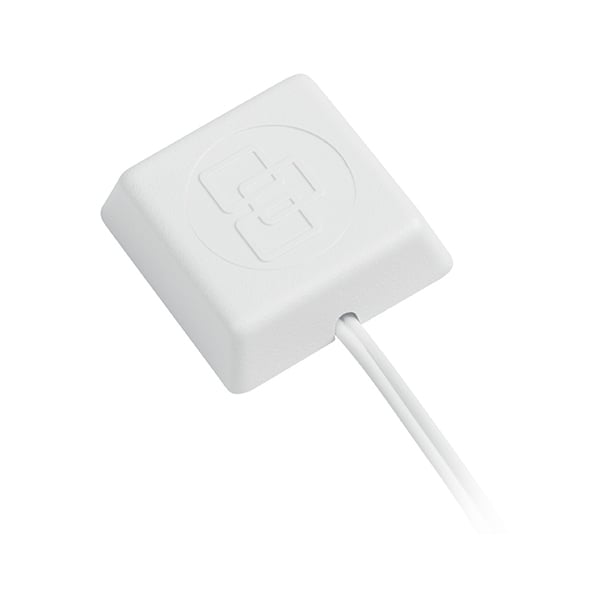
DESCRIPTION
Perfect for all existing wired systems, the 5150 shock sensor has millions of installations around the world. This unit is still very popular, and we use it in some of our jobs, though it will likely see less use with the rise of wireless components.
Features:
- Reliable and field tested
- Great for any wired system
Sabre Wireless Shock Sensor
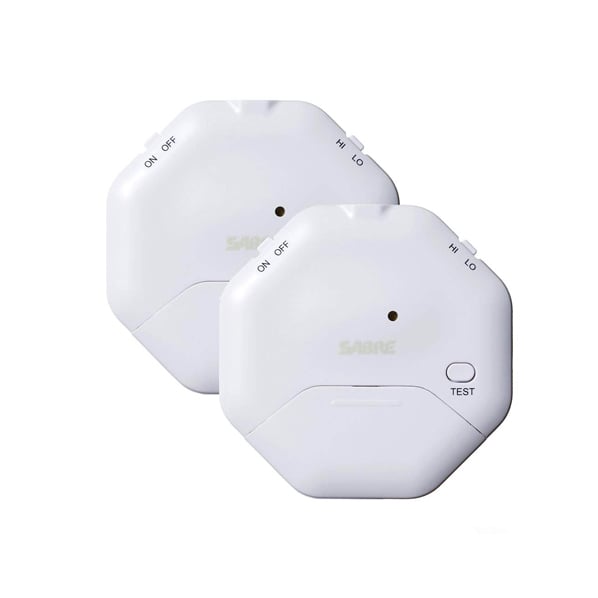
DESCRIPTION
This Sabre shock sensor doesn’t connect to any panel or monitored security system, so is only suitable for the most budget-friendly setups. It has the built-in alarm that most other shock sensors have, but reviews warn of volume issues that make it hard to hear in other rooms. Still, if you need a shock sensor and are on a shoestring budget, this may be your only option.
Features:
- Doesn’t connect to any security panel
- Has a warning sticker on the component that will help deter intruders
- Best for shoestring budgets
Other Glass Break Sensors
ADT Glass Break Sensors
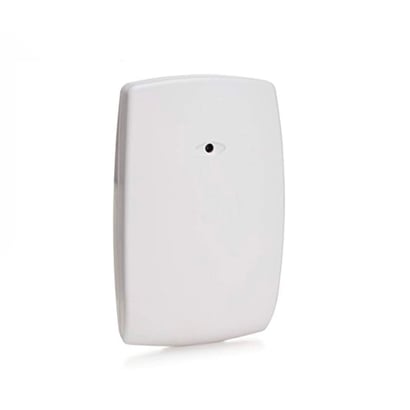
DESCRIPTION
ADT uses a variant of the Honeywell 5853 in most of their systems. Unfortunately, they don’t allow DIY installation of third-party components, so you’ll have to purchase through ADT directly. The 5853 is a solid component, though, so if you’re set on ADT, it’s your best (and only) option.
Features:
- Same specifications as the Honeywell 5853 above
- Must purchase components through ADT
Vivint Glass Break Sensors
-0205.jpg)
DESCRIPTION
Vivint uses the 2GIG GB1 listed above. Again, if you want to install it in your Vivint system, you’ll need professional help, but the component should serve you well. For more information, see the 2GIG GB1 overview listed above.
Features:
- Works with Vivint systems
- 15-foot range
Frontpoint Glass Break Sensor
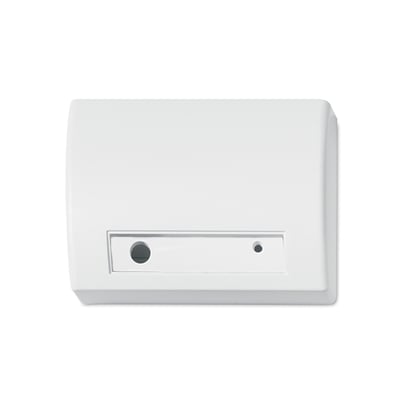
DESCRIPTION
The sensor most commonly attributed to Frontpoint is the Interlogix ShatterPro wireless acoustic sensor. It operates similarly to other sound-based components, but only has a 20-foot range, rather than the standard 25.
Features:
- Works with Frontpoint systems
- 20-foot range
SimpliSafe Glass Break Sensor
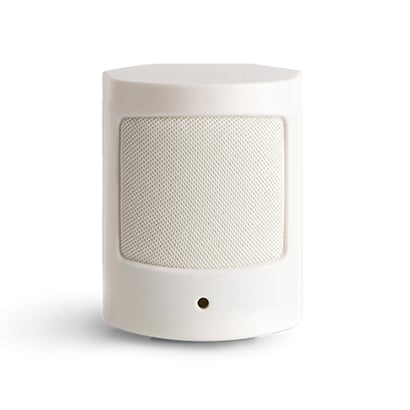
DESCRIPTION
The SimpliSafe glass break sensor is a proprietary unit that only works with their components and monitoring. It’s an acoustic sensor with a 30-foot range. If you’re with SimpliSafe, this is your best choice.
Features:
- Proprietary SimpliSafe technology
- 30-foot range
More Options
Ring Glass Break Detectors
DESCRIPTION
As of the end of summer 2019, Ring does not have a glass break sensor, but it’s worth noting that they offer an integration with Alexa guard. This means any security-related notifications will be sent to your phone through the Ring.com app with the built-in option to contact the authorities. Still, if glass-break sensors are a priority, other security providers offer better options.
Alexa Guard
DESCRIPTION
In early summer 2019, Amazon rolled out the Guard service for all Echo models. When enabled, your Echo can listen for carbon monoxide and fire alarms and the sound of glass breaking. When one of these is detected, you’ll get a notification. This isn’t a replacement for a professional security system, but can be a helpful supplement.
If you need help finding which home security components would be best for you, contact us. We’ll help you design a system that will work for your needs and budget, no matter if you live in an apartment or full-sized home.
Call Today To Get Started 800-343-2250
- Call or complete the online form to find out how you can add cameras and automation features to your home security package.
- We’ll reach out to schedule a contactless appointment to learn more about your specific security needs, camera and automation preferences, and other relevant features
- Following installation by one of our service providers (or you can DIY), simply download the accompanying Alarm.com app to take advantage of features, such as remote monitoring, Wellcam, real-time alerts, and video analytics data.
